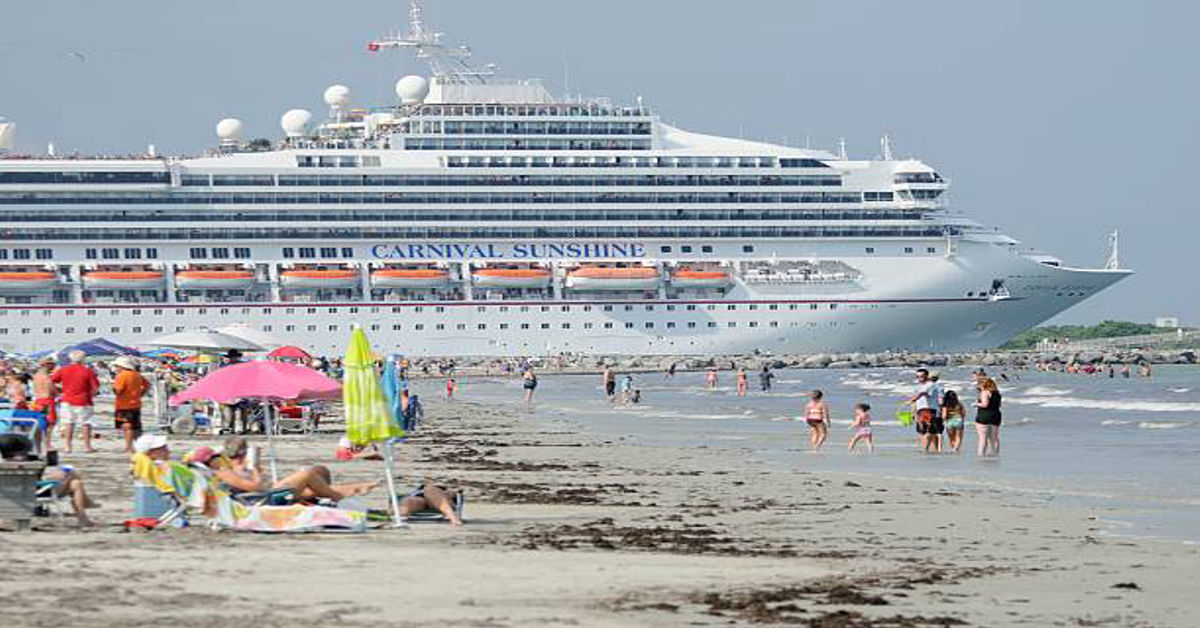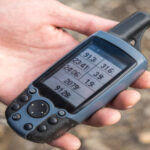Cruise ships are often celebrated as luxurious floating resorts, offering passengers scenic ocean views, fine dining, entertainment, and an escape from daily life. However, the romanticized image of maritime travel occasionally collides with harsh realities, as evidenced by incidents involving cruise ships stranded in the Atlantic Ocean. Stranded passengers face not only logistical difficulties but also psychological, physical, and emotional challenges that demand careful attention from authorities, maritime professionals, and the cruise lines themselves. Understanding the factors that lead to such incidents, the immediate and long-term impact on passengers, and the protocols involved in rescue and recovery is crucial for appreciating the complexity of maritime safety and crisis management. This article explores the phenomenon of cruise ship passengers stranded in the Atlantic, covering causes, operational difficulties, passenger experiences, emergency protocols, and lessons for the future.
The Atlantic Ocean, with its vast expanse, unpredictable weather patterns, strong currents, and occasional storms, presents unique challenges for maritime operations. Cruise ships traversing these waters are subject to a variety of risks, ranging from mechanical failures to adverse weather conditions or medical emergencies. When a ship becomes stranded or immobilized, passengers may experience disruptions that go far beyond minor inconvenience. These can include delayed meals, limited access to medical care, anxiety about safety, exposure to extreme weather, and disruptions to communication with family and authorities. The psychological toll on passengers is compounded by uncertainty about the duration of the delay, potential risks of the surrounding environment, and the physical confines of the ship, especially when normal amenities become restricted. Therefore, managing a maritime incident in the Atlantic is a multifaceted challenge requiring coordination between cruise staff, coast guard authorities, and external rescue teams.
Causes of Cruise Ships Becoming Stranded in the Atlantic
Cruise ships can become stranded for a variety of reasons, and understanding these causes is essential for preventing future incidents. The most common factors include mechanical failures, navigation errors, extreme weather conditions, fuel shortages, and unforeseen medical or operational emergencies.
1. Mechanical Failures
Modern cruise ships are sophisticated vessels with complex propulsion systems, electrical networks, and hydraulic machinery. Engine failures, power outages, or problems with navigational equipment can render a ship immobile. For example, a main engine malfunction can leave a vessel unable to maneuver safely, leaving it vulnerable to drifting due to ocean currents. Repairs may take hours or even days, depending on the availability of spare parts and technical expertise onboard.
2. Extreme Weather Conditions
The Atlantic Ocean is notorious for sudden storms, heavy fog, and rough seas. Tropical storms and hurricanes, in particular, can force ships to reroute, slow down, or even halt operations entirely. Severe weather can damage a ship’s mechanical systems or cause minor malfunctions to escalate into more critical issues. Additionally, the risk of capsizing or onboard accidents increases during turbulent conditions, making immediate response and passenger management a priority.
3. Fuel or Supply Shortages
Cruise ships operate on precise logistical planning for fuel, food, water, and medical supplies. Delays, unexpected detours, or poor planning can lead to shortages, leaving passengers stranded with limited amenities. This scenario is particularly problematic in remote parts of the Atlantic, where resupply opportunities are infrequent and dependent on nearby ports or support vessels.
4. Human Errors
Navigational mistakes or lapses in operational judgment can contribute to a vessel becoming stranded. Despite advanced GPS and radar systems, human oversight—such as miscalculating tide levels, currents, or course changes—can cause the ship to drift into unsafe zones or shallow waters. Even minor misjudgments can escalate into extended delays or require external assistance for safe recovery.
5. Health or Medical Emergencies
Unexpected medical emergencies affecting multiple passengers or crew members may require a ship to halt or divert to the nearest port, effectively stranding the majority of passengers until safe evacuation or care is provided. In extreme cases, infectious disease outbreaks can force ships to remain isolated offshore until the situation is resolved, as seen in historical cruise ship incidents.
Challenges Faced by Stranded Passengers
Passengers stranded at sea confront a combination of physical, psychological, and logistical challenges. These challenges extend beyond the discomfort of being temporarily immobile and include concerns about personal safety, health, and mental well-being.
1. Psychological Stress and Anxiety
Being stranded in the middle of the Atlantic creates uncertainty that can lead to heightened stress and anxiety among passengers. Uncertainty about the duration of the delay, potential exposure to extreme weather, or fear of maritime accidents contributes to mental strain. Passengers must cope with confined living spaces, disrupted routines, and limited social interactions, which can intensify feelings of isolation or helplessness.
2. Physical Comfort and Health
Stranded passengers may experience limited access to basic necessities such as fresh food, potable water, or functional amenities. In addition, prolonged periods at sea can affect physical well-being due to motion sickness, dehydration, or fatigue. Cruise lines must prioritize health services, ensuring that medical care is accessible, particularly for elderly passengers or those with chronic conditions.
3. Social and Communication Challenges
Passengers often feel isolated from external communication networks, making it difficult to update families or authorities about their situation. Limited internet access or intermittent satellite communication can heighten anxiety and complicate emergency coordination. Maintaining clear communication channels becomes essential for both passengers and rescue operations.
4. Operational and Logistical Difficulties
Cruise ship staff face operational challenges in managing resources, maintaining morale, and coordinating safety protocols. Providing meals, clean accommodations, sanitation, and medical care requires careful management, particularly during extended delays. The crew must also navigate regulatory requirements and coordinate with maritime authorities, port officials, and rescue teams to ensure passenger safety.
Passenger Safety Protocols and Emergency Management
Safety is paramount for cruise ships stranded in the Atlantic. Cruise lines develop comprehensive emergency protocols that address both immediate risks and long-term passenger welfare. Key components include onboard emergency procedures, evacuation plans, communication protocols, and coordination with external agencies.
1. Onboard Emergency Procedures
Crew members are trained to manage emergency scenarios, including mechanical failures, extreme weather, and medical emergencies. Protocols often involve designated muster stations, distribution of safety equipment, and structured communication to keep passengers informed and organized.
2. Evacuation and Rescue Plans
In cases where a ship cannot safely navigate to the nearest port, external rescue operations may be necessary. Coast guards or specialized maritime rescue teams deploy vessels or helicopters to assist with evacuation, medical transport, or resupply. The timing, safety, and efficiency of these operations are critical to prevent accidents and ensure passenger survival.
3. Communication and Coordination
Maintaining communication between the cruise ship, maritime authorities, and passenger families is essential. Ships are equipped with satellite phones, emergency radios, and internet-based communication tools to relay information regarding the ship’s status, weather updates, and estimated timelines for rescue or port arrival.
4. Resource Management
Cruise staff must carefully ration food, water, and medical supplies to ensure sustainability over potentially extended periods. Strategic planning includes assessing onboard stock, organizing meal schedules, and identifying critical medical needs among passengers.
Case Studies: Lessons Learned from Atlantic Cruise Ship Incidents
Analyzing past incidents provides valuable insights into improving safety, operational efficiency, and passenger experiences. Several historical cases of Atlantic cruise ships stranded have highlighted recurring themes in maritime challenges and responses.
Table: Selected Examples of Cruise Ship Incidents in the Atlantic
| Incident | Cause | Duration | Passenger Impact | Lessons Learned |
|---|---|---|---|---|
| Engine failure off mid-Atlantic | Mechanical malfunction | 36 hours | Limited amenities, mild panic | Importance of backup systems and repair readiness |
| Storm delay near Caribbean | Extreme weather | 48 hours | Food rationing, anxiety | Weather monitoring and rerouting protocols |
| Medical emergency isolation | Infectious disease | 72 hours | Restricted movement, stress | Isolation planning and health protocols |
| Navigation error near Azores | Human error | 24 hours | Confusion, minor injuries | GPS verification and staff training |
| Fuel shortage incident | Logistical miscalculation | 30 hours | Reduced meals, passenger frustration | Precise resource management and contingency planning |
These cases illustrate the need for proactive preparation, clear communication, and crew training to handle prolonged maritime delays.
Psychological and Social Strategies for Stranded Passengers
Passengers can adopt several coping strategies to manage stress, uncertainty, and discomfort while stranded at sea:
- Stay Informed: Follow updates from crew members or maritime authorities to reduce anxiety caused by uncertainty.
- Maintain Routine: Establish a daily schedule, including meal times, exercise, and leisure activities, to preserve normalcy.
- Social Engagement: Interact with fellow passengers to foster community support and alleviate feelings of isolation.
- Focus on Health: Hydrate, practice light physical activity, and adhere to medical advice for pre-existing conditions.
- Mental Resilience: Employ mindfulness, meditation, or journaling to manage stress and maintain emotional stability.
Lessons for Maritime Travel and Future Preparedness
Stranded cruise ship incidents in the Atlantic offer multiple lessons for cruise lines, regulatory authorities, and passengers. Preventive measures and preparedness strategies are essential to reduce risk and ensure safety.
1. Redundant Systems and Backup Plans
Cruise ships should maintain backup engines, power generators, and medical equipment to address mechanical failures without stranding passengers.
2. Advanced Weather Monitoring
Investing in accurate meteorological monitoring systems helps ships avoid dangerous storms and plan alternative routes in advance.
3. Resource and Supply Contingency
Maintaining surplus food, water, and medical supplies ensures passengers can survive extended periods at sea.
4. Crew Training and Simulation Drills
Crew members must undergo regular emergency drills, including evacuation, medical response, and passenger management, to prepare for real-life crises.
5. Passenger Education
Pre-departure briefings and educational materials can prepare passengers mentally for potential delays, ensuring they understand safety protocols and emergency procedures.
Table: Key Recommendations for Cruise Ship Safety in Atlantic Operations
| Area | Recommendation | Benefit |
|---|---|---|
| Mechanical | Backup engines and spare parts | Reduces risk of immobilization |
| Weather | Real-time monitoring and predictive models | Avoids dangerous storms |
| Supplies | Surplus provisions | Ensures basic needs during delays |
| Crew Training | Emergency drills and simulations | Improves response efficiency |
| Passenger Awareness | Pre-trip safety briefings | Reduces panic and confusion |
| Communication | Satellite phones and digital alerts | Maintains contact with families and authorities |
| Medical Preparedness | Onboard medical staff and equipment | Handles emergencies promptly |
Conclusion
The experience of cruise ship passengers stranded in the Atlantic highlights the intricate interplay between maritime engineering, human psychology, logistics, and emergency preparedness. While cruise travel offers an unmatched sense of luxury and adventure, unforeseen incidents demonstrate that the ocean’s challenges cannot be underestimated. By understanding the causes, risks, and management protocols associated with stranded vessels, both cruise operators and passengers can contribute to safer, more resilient maritime journeys. Lessons learned from past incidents emphasize the importance of preparation, clear communication, resource management, and emotional resilience. With appropriate measures, cruise travel in the Atlantic can continue to provide enjoyment and exploration while minimizing the risks associated with being stranded at sea.
FAQs
1. Why do cruise ships become stranded in the Atlantic?
Common causes include mechanical failures, extreme weather, fuel shortages, navigation errors, and medical emergencies.
2. How long can passengers be stranded?
Duration varies from a few hours to several days, depending on the issue and the efficiency of rescue or repair efforts.
3. What safety measures exist for stranded passengers?
Protocols include emergency drills, communication systems, evacuation plans, medical support, and rationed resources.
4. How do passengers cope psychologically during stranding?
Strategies include maintaining routines, social engagement, mindfulness, journaling, and staying informed about updates.
5. What lessons have been learned from past incidents?
Key lessons include investing in backup systems, improving weather monitoring, crew training, resource management, and passenger education.











